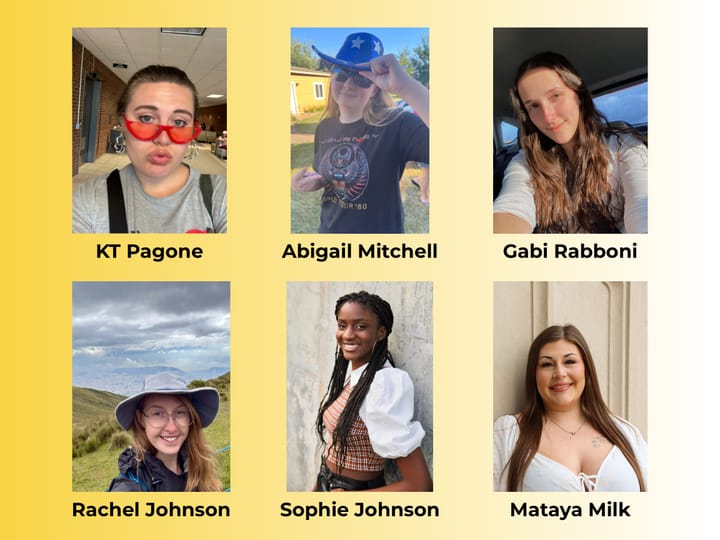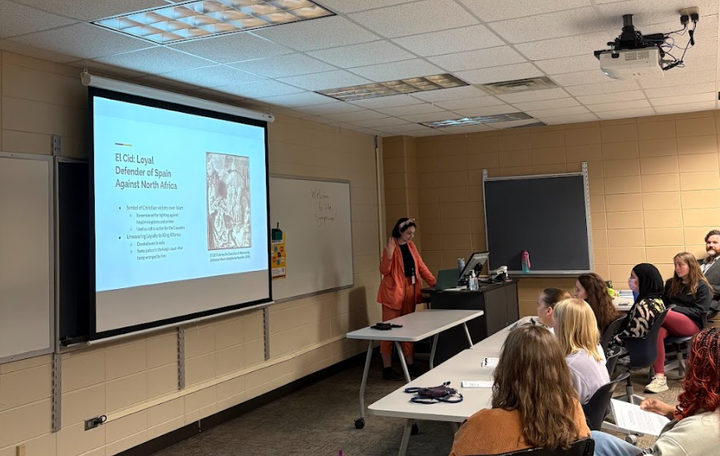Silent Voices speak out at Lincoln High
The largest mass execution in U.S. history did not take place in the Confederate South, nor in Salem, Massachusetts.
It was only a few hours away in Mankato, Minnesota where, on Dec. 26, 1862, the U.S. military hung 38 Dakota men before a crowd of nearly 4,000 spectators. The little-known tragedy is called the “Dakota 38.”
When Lincoln High School students in Janet Fleming-Martin’s Native American Connections class first learned about the Dakota 38, they were angry. They wanted to know why they, as native students, were the only ones learning about the hanging.
“I was sitting there crying, and I remember looking at Miss Martin, and my face was all red, and I was just like ‘why doesn’t this get told in history books?’” Lincoln student Delilah Rouse said.
In their other, majority-white classes, she and others said this history is glossed over.
“Our other history classes don’t show the violence,” Lincoln student Martha Negash added.
So, they decided to do something.
“I was like, ‘We’ve got to do something. We can’t just sit here. We have to write something about it,” Rouse said. “And so I said, ‘Let’s come up with a newsletter.’”
The classroom convinced Martin-Fleming, who was initially hesitant to stray from planned curriculum, to allow them to publish their own newsletter.
“We buckled down and started writing it,” Rouse said. “We wanted to let the school district know that we are Native, we are here, and we’re still struggling. We want to share our voices and the truth that isn’t in the history books.”
They titled their monthly newsletter the “Mitakuye Oyasin,” the Lakota phrase for ‘we are all related.’ Below the title, their penname: “the Silent Voices.”
Now, on its 8th publication, they’ve written on the desecration of Indian graves for use in early Mayo Clinic studies, the cruel assimilation practices inside boarding schools and the American Indian Religious Freedom Act passed in 1978 which finally allowed Natives to practice their religion without fear of punishment.
In addition to historical events, they’ve also published social and cultural articles, featuring Q&A’s with Native students and small Lakota language lessons. It’s a way for them to revitalize and embrace their culture in a school and city where it can be easy to feel invisible. But besides sharing history and culture with their peers, writing has also become a medium for the students to personally explore their own Native identities.
“In this one room, we finally feel comfortable to write and be free,” Rouse said.
On Nov. 9, the only noise in Miss Fleming-Martin’s classroom was pencil scratches as her students wrote down their daily thoughts for five minutes. Then, they read their words aloud, most of which reflected upon their Native identities.
“We’re one of the most recently conquered people on earth,” student Chad Ferguson II said shortly after reading his entry. “And we still feel that through the generations.”
A study published by the American Journal of Community Psychology found that 34 percent of Native Americans had daily thoughts about the loss of their culture, 24 percent felt angry from historical losses and 35 percent were distrustful of dominant white culture.
It’s no surprise then, that when researching why Native students were falling behind their white peers, the South Dakota Native American Student Achievement Advisory Council cited historical and generational trauma as one of the main culprits. It writes in its 2015 report that, “While today’s students did not experience the trauma of forced assimilation firsthand, they bear witness to the trauma experienced by their parents, grandparents, aunts and uncles.”
Other hurdles the council listed were racism, a lack of culturally relevant curriculum/methods and social issues such as poverty and mental illness.
“What our elders went through affects us as a youth because of how they dealt with their pain with alcohol and drugs. It affects the youth so highly that we think that’s okay too,” student Luisa SargentPonce said. “I believe what we’re really trying to accomplish is to make sure the youth and the kids stay out of that cycle.”
She hopes that finding their voices through writing will help break that cycle.
“We’ve also had our tongues removed metaphorically because we don’t speak our language and we know nothing about our history other than what we learn in [Native American Connections],” Rouse said. “And even then, it’s not enough for us to sit down and learn one chapter that should take weeks and months to learn.”
Rouse, who captures the room’s attention when she speaks, is especially passionate about preserving history and Native culture. This past year alone, she presented her class’ newsletter before the South Dakota Indian Education Summit in Pierre, as well as the Sioux Falls School Board. Recently, she founded the “All Nations Youth Council.”
On Nov. 9, Rouse and roughly thirty others gathered in the basement of All Souls Church for the council’s first meeting. On her lap, Rouse held a basket filled with small bundles of sage wrapped in colorful ribbons. The bundles had been tied to the class’ prayer tree outside the front of Lincoln High School, bearing their prayers on its branches.
Circling around a fire in the frigid air, Rouse and Negash placed the bundles of prayers and sage in the flames as two men sang in Lakota.
Rouse said she hopes the council will allow students of all nations to gather, support one another and find the resources they need to be successful.
“We live in a white world,” Rouse said. “We don’t live in a native world, and so we don’t have that support.”
In 2014, 46.98 percent of South Dakota Native students graduated from high school, as opposed to 88.49 percent of their white peers. And for those who do graduate, it can be difficult to find support for higher education. Despite the one in 25 students in the Sioux Falls School District who are Native, only one in 260 is Native on Augustana’s campus.
“I think that for our native students to take that jump, university settings need someone on staff that is solely dedicated to the attention of having native students in their buildings and creating an environment where it’s safe for them,” Fleming-Martin said. “These kids can fly on their own, but they need support backing them.”
That night, Rouse thanked her peers and reminded them of who they were—the seventh generation.
It was a reference to Crazy Horse’s prophecy: “I see a time of seven generations when all the colors of mankind will gather under the sacred Tree of Life and the whole Earth will become one circle again.”
“I feel like we are the seventh generation, and that’s the wake-up call to do what we were doing,” Rouse said. “You need to write, you need to put your words down and you need to tell this history.”



